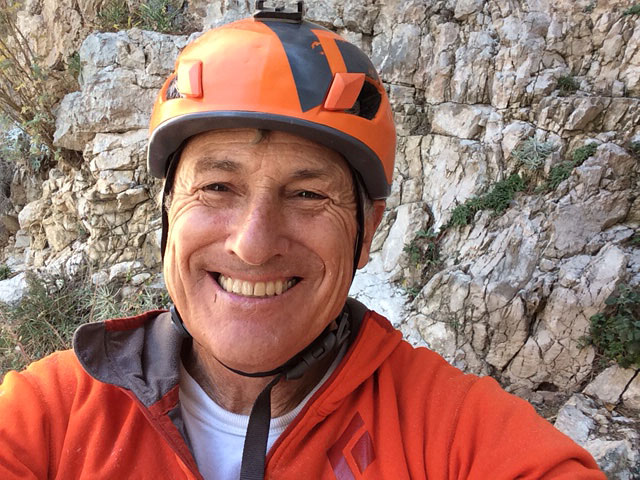


Twenty-Meter Tumble
James Garrett, American Fork Canyon, Utah
On August 10, 2010, I got pulled off a new route I was attempting in American Fork Canyon with an experienced but much younger climber, with whom I’d never climbed before. I had established many first ascents traditionally, from the ground up, and though this climber also had been active establishing new routes, he had confined his style to top-down methods. He seemed eager to learn to drill on lead and had proposed a moderate-appearing slab. Although considerably harder than expected, the first pitch went well, though there were patches of loose scree intermingled with the compact limestone. Both of us wore helmets.
While leading the second pitch, I drilled four bolts on lead. (The limestone accepted gear poorly.) After the fourth bolt, the angle decreased considerably, with small, scree-covered ledges. I was now about 25 meters above my belayer, and after passing a small corner, visual and verbal contact became limited. The river and traffic noise further complicated communication. As I climbed easy but loose terrain about two meters above the last bolt, I suddenly felt a huge amount of drag on the rope. I struggled to maintain my position on the slope. Suddenly and without warning, the belayer put his entire body into pulling in the rope, as if he had someone on a top-rope who was falling or had yelled “Take!”
As I started to fall, I consciously tried to relax my body, knowing that my last protection bolt was not far below. However, I fell and tumbled more than 20 meters, finally coming to a stop a mere three to four meters above the belayer.
(In the aftermath of this accident, it never became clear why or how my belayer pulled me off, nor how he introduced so much slack into the system.) My helmet was so deformed that it fell off my head at the end of the fall and tumbled onto the belay ledge.
As a registered nurse, I self-diagnosed my most life-threatening injuries and, concerned about my airway, asked the belayer to lower me the short distance to the belay ledge. Instead he called 911 and then followed their instructions not to move me farther, while we waited for an evacuation. After about 45 minutes, rescue crews reached me from the ground. Following my instructions, they placed a bolt next to the second one I had placed, and they eventually lowered me to the ledge. Thirty minutes later I was hoisted out by helicopter and flown to the hospital, where X-rays revealed 15 broken bones in my C-spine, T-spine, right hand, right ribs, and right foot. A right pneumothorax and lung contusion added to the list of injuries. No paralysis or head injury was incurred, but fusion of the T-spine was later necessary.
My helmet absorbed severe blows during the fall, and without question it saved a life on this day. I still have it on my wall at home. I incurred no head injuries at all in the accident: no loss of consciousness, no memory loss, nothing above my neck. In the 1970s and ’80s I only occasionally wore helmets, while alpine climbing. Now I even belay with a helmet. I’m never without.